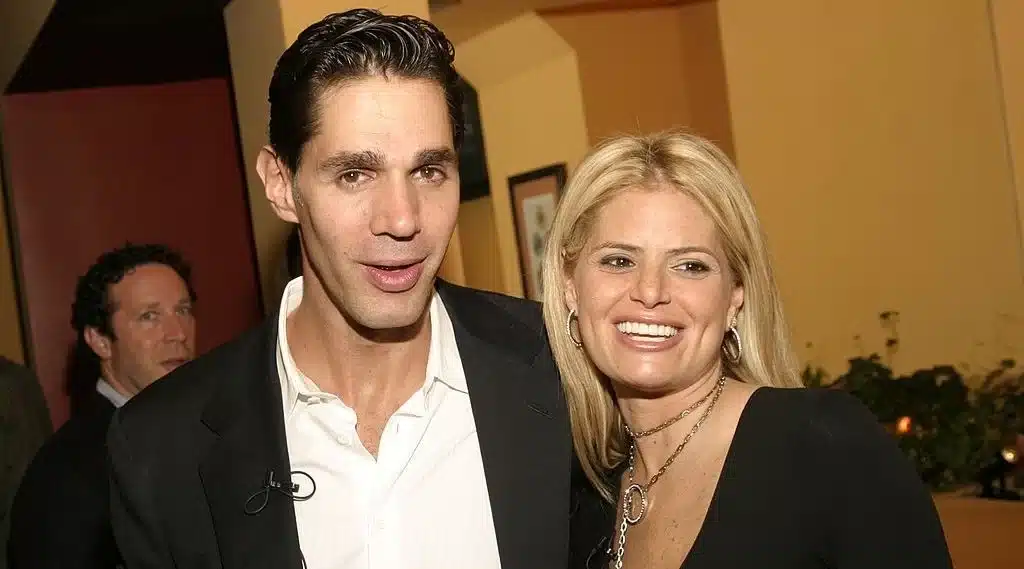What is “Wife Swap”?
The American reality show “Wife Swap”, based on the British show of the same name, premiered on ABC in September 2004. The program saw two families – typically with opposing lifestyles and hailing from different social classes – swap wives or, occasionally, husbands, for two weeks. During the show’s original six-year run, John Schwab was in charge of narration.
To spice things up, the two wives involved in the swap tended to be wildly different: one might be a neat freak while the other hated housework, or be a vegan whereas the other was not. In almost every episode, the two families had to carefully navigate their new member’s social and cultural differences, which sometimes resulted in clashes.
“Celebrity Wife Swap”, the show’s spin-off, premiered in January 2012 and ran for four seasons. The original series was quietly cancelled in 2010; it enjoyed a brief revival in 2013, and in 2018 CMT announced that 10 new episodes would be released under its original format. The reboot, however, premiered on Paramount Network instead in April 2019. Paramount renewed the show for a twelfth season but cancelled it in September 2020, shifting to films.
The first week is a challenge in both households: each wife leaves behind a house manual explaining the rules and lifestyles in the household, which the replacement wife must follow. At the rules change ceremony, each wife determines which rules to apply and which to discard during the rest of her time with her new family.
Things change in week two as the new wives establish their own rules which must be adhered to by the family they are staying with. An awkward adjustment period usually follows, and the wives also disburse a sum of money to the new family, which is to be spent as they see fit.
When the two-week experiment is over, the two couples have their first face-to-face group meeting where wives and husbands discuss how the experience made them feel. Of course, this isn’t intended to be a peaceful chit-chat, as on at least two occasions the meetings have turned violent, and even in milder cases it’s not unusual for the families to hurl personal insults at each other.
On rarer occasions, the families reach a comfortable middle ground, and conclude the experience with mutual respect for each other, having learned how other households live. Cameras return after a few weeks to document any changes that the families have implemented since the swap.
Famous Episodes
Although the original “Wife Swap” had over 120 episodes, and the reboot 20 more, viewers still remember certain families years later. In 2004, Jodi and Steven Spolansky agreed to appear on the show – and viewers were soon turned off by the delusions of grandeur and entitled behavior displayed by the wealthy and affluent family. Steven made cruel, classist remarks about the swapping wife and her family’s economic situation, whereas Jodi laughed at Lynn’s job chopping wood, and made disparaging remarks towards Lynn’s husband Brad due to his family’s modest lifestyle.

Despite the Spolansky clan living in New York City’s Upper East Side, Jodi and Steven were considered neglectful due to the amount of time they spent away from their children: from gym sessions to shopping trips or meals out alone, they were rarely seen with their offspring. Lynn and Brad, a rural, low-income family living on a farm in New Jersey, couldn’t have been more different.
To celebrate the US show’s 100th episode in March 2009, producers picked out 24 families to enter a competition and do a second swap. Voting began in October 2008: the psychic, artistic Silvers and the eccentric UFO-hunting Heenes were picked by viewers, and the second family became notorious months later for their participation in the infamous Balloon boy hoax.
In October 2009, Richard and Mayumi Heene released a homemade gas balloon shaped like a flying saucer – and claimed that their young son was trapped inside it. The balloon flew for 90 minutes and reached 7,000 feet; Richard and Mayumi’s son, Falcon, was nicknamed “Balloon Boy” by the media, and the event attracted attention from all around the world.
In a dramatic chase, local police and National Guard helicopters alike followed the balloon, which landed near Denver International Airport. Falcon wasn’t found inside, and reports of an object falling from the balloon led to a frantic search for the youngster. The boy was later found hiding in the Heene family’s attic, where he’d apparently been all along.
After a last-minute “Larry King Live” interview with the family, Falcon blew his family’s cover when he revealed that his parents had said that they were doing it for the show. It would appear that the Heenes had staged the whole publicity stunt, and days later, the Larimer County sheriff at the time concluded that Richard and Mayumi would face felony charges.
https://twitter.com/simonpegg/status/4911287576
In November 2009, Richard was hit with a 90-day jail sentence and ordered to pay $36,000 after pleading guilty to attempting to influence a public servant; his wife was sentenced to 20 days of weekend jail. The family later claimed that they were pressured into taking a guilty plea after Mayumi was threatened with deportation; they were pardoned by Governor Jared Polis in December 2020.
Back to “Wife Swap” – a 2009 episode saw the Hollands of North Caroline have their lives turned upside down by Joy Brown, a fitness instructor who tried to change the family’s unhealthy lifestyle. Curtis Holland, the family’s six-year-old son, was particularly unappreciative of Joy’s efforts and became almost famous for his witty one-liners and comedic timing.
He was approached with advertisement offers for a bacon company, and to film his own reality show – offers which didn’t work out, perhaps due to his young age. Some clips from his episode also received millions of views and went viral years later. In 2015, Holland created a GoFundMe to buy a car, claiming that he was never paid for his “Wife Swap” appearance; the page was soon removed.
https://www.facebook.com/WifeSwap/videos/554641931909256
Legal Issues
As is the case with the best reality shows, “Wife Swap” was plagued by scandal and controversy during its first six-year run. The first of many legal hiccups began brewing in 2004, when ABC outbid Fox Network and announced an American version of “Wife Swap” which would be called “Trading Moms”. Not to be outdone, Fox came out with an almost identical program named “Trading Spouses” which broadcast in July of the same year.
ABC decided to use the UK title for its series, which broadcast in late September 2004. RDF Media sued Fox in December 2004 for copyright infringement, claiming that they had copied the show’s format without permission. Following a years-long legal battle, FOX sold the show’s rights to CMT in 2008.
Meanwhile, in November 2005, a participant of the American series sued ABC when they traded his wife for a gay man. He accused ABC of dishonesty, not letting him get in touch with his wife, and making him skip out on college lessons due to tight filming schedules. In even more sensational claims, he added that ABC refused to pay for his wife’s return home or even tell him where she was once production wrapped up.
In December of the same year, the man sued for over $10 million. A spokesman for the show revealed that the spouse could be of either gender according to the contract. The outcome of the lawsuit remains uncertain, but the UK version of “Wife Swap” began seeking out more gay or lesbian couples in 2007, so as to expand its audience.
In March 2010, ABC Network was hit by a $100 million lawsuit by Alicia Guastaferro – who appeared in the show in 2008. Claiming that she‘d suffered from suicidal tendencies and panic attacks after the public embarrassment caused by her appearance on the show, she also added that many scenes had been staged, as producers had asked her to behave differently. It’s doubtful that she received the nine-figure sum, but the lawsuit was privately settled out of court in the same year, with no details shared to the press.
https://www.instagram.com/p/CkBW6T9Lt4T/
Cancellation
Viewers were intrigued when “Wife Swap” was cancelled, given the chaotic show’s popularity and influence, and only years later can we begin to figure out the truth about its abrupt end.
“Wife Swap” is similar to other crazy reality shows, in that many aspects were exaggerated or outright fabricated. Christy Oeth, who participated in the show’s earlier episodes, complained to The New York Times about being depicted as a workaholic mother, who put her children on the backburner to focus on her career. “There is a very big element of unreality to the way they pigeonholed me,” she griped.
However, Christy’s complaints were not entirely unfounded: although it was claimed that she ran her family like a business, and lacked maternal instincts, the truth was that she put her career on hold for half a decade to raise her four children – which producers forgot to mention – and had only returned to work when her husband left his job in Manhattan.
Many naïve families had the same issue, and with time more and more former participants came forward with their own stories. Nancy Cedarquist’s family, for example, was supposedly living out of a treehouse. The show’s producers concocted a compelling storyline, claiming that the Cedarquists lived off the grid, and that Nancy’s husband, Keith, was the only semi-functional member of society.
As it happens, the Cedarquist family home had no cement foundation, and was instead perched on the bases of trees; it’s also true that Nancy was homeschooling her six children. However, viewers didn’t get to see the wide range of extracurricular activities the young Cedarquists were involved in: from ballet and band, to basketball and even a pom-pom squad.
More details were left out of the Oeth-Cedarquist episode: tensions between Nancy and Michael, Christy’s husband, reached an all-time high and she was put up in a nearby hotel just five days into the experience. Producers drove Nancy to and from the Oeth house until she finished filming her scenes, which they also manipulated, and the new rules she devised for the Oeth children were actually written by the production team. “I really thought reality television was more real than it is,” she lamented.
The children and young people who participated in “Wife Swap” had their own complaints, which is perhaps unsurprising, as producers used their insecurities against them after having them fill in a 700-question psychiatric exam. With that said, disgruntled reality TV participants are a dime a dozen, and it’s unlikely that the show was cancelled on this basis alone.
Let’s not forget that in 2020, Paramount switched from reality shows to other content. The president of entertainment brands at Viacom CBS announced in the same year: “We’re doubling down on scripted but diversifying with made for TV movies, miniseries, and blockbuster series.” Paramount culled many of its unscripted programs, including “Battle of the Fittest Couples” and “Ink Master”, implying that the cancellation of “Wife Swap” was bound to happen sooner or later under the network.

As for “Celebrity Wife Swap”, it never quite took-off, despite boasting big names such as the rapper Coolio, the actor Corey Feldman, and the exuberant reality star Heidi Montag. The spin-off was believed to be even more scripted than its original, given that celebrities have more to lose than your average Joe, and viewers soon lost interest.
One could argue that the writing was on the wall for “Celebrity Wife Swap” when season three premiered in 2014. Amongst adult viewers aged 18 to 49, the show received a measly 1.0 rating according to Nielson numbers, and only half as many people tuned in to watch the premiere compared to season two. Nevertheless, producers tried to turn things around in season four, but despite riveting appearances from the likes of Tami Roman and Margaret Cho, it was too little, too late.
There have been no talks of rebooting or rebranding the “Wife Swap” franchise, which is, perhaps, for the best.











Leave a Comment